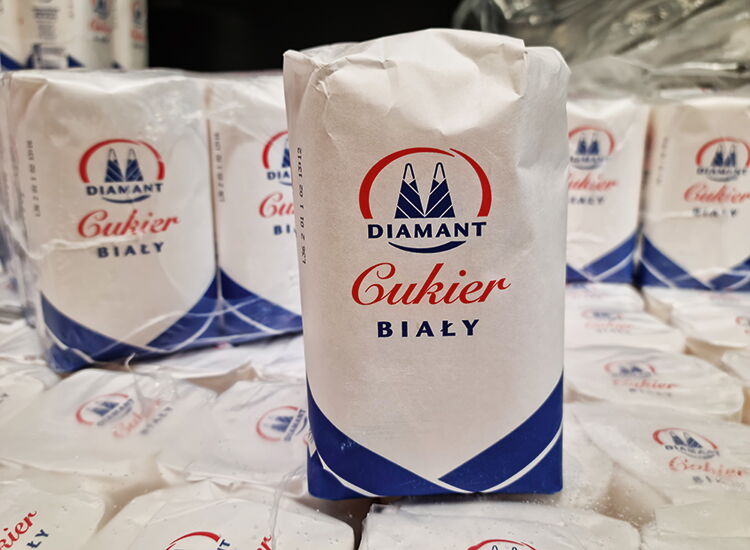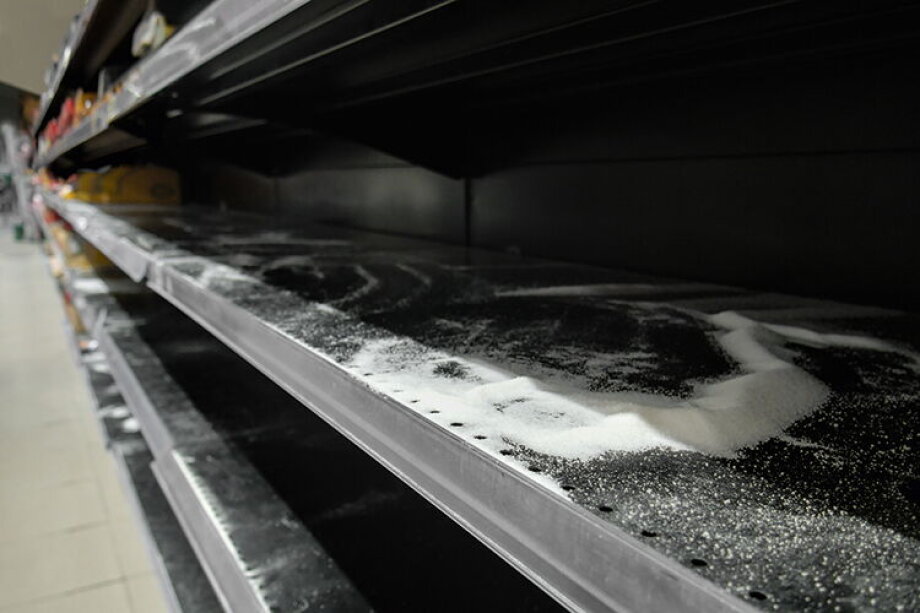Panic buying episodes have occurred several times in recent years. At the beginning of the pandemic, Polish consumers stockpiled basic goods like rice, canned food, and toiletries. The situation was repeated again in March, after the beginning of the war in Ukraine.
During the COVID-19 outbreak, the panic in food markets lasted for about three weeks, while in March the situation normalized much faster and supermarket shelves were full again within a week. However, consumers react rather nervously to reports of possible good shortages. Andrzej Gantner, director at the Polish Federation of Food Industry, told the Warsaw Business Journal: “Feelings of food security, trust in the government, and in the entire system has been damaged.”
Psychologists explain panic buying as being driven by fear of the unknown and attempts to control an uncertain situation. Many simply look at what others are doing and follow the flock to soothe themselves. Galloping prices for groceries further worsen the situation. Worried that products will be even more expensive in the future, people rush to buy more than they really need.
Marek Kośny, chairman of the Scientific Council of the Polish Economic Society, however, warns that preparing for the worst-case scenario may cause more harm than good. “Increased demand, unjustified by current consumption needs, may lead to further price increases, periodical shortages of individual goods on the market and, consequently, to a growing panic,” he told Warsaw Business Journal.
Sugar rush
A notable example of consumer panic occurred in July when Poles ran to buy sugar, fearing shortages and price increases. Photos of empty shelves on social media further fueled this sugar rush. Agriculture minister Henryk Kowalczyk announced that there was no sugar deficit in the country. However, his reassurances did not stop customers from buying up to 100 kilograms at once, according to Rzeczpospolita. In response, major retail chains introduced a limit of 10 kilograms per customer.
Poland, the third largest sugar supplier in the EU behind Germany and France produced 2.3 million tons of sugar in 2021-2022. This is more than the country needs for domestic consumption, and the annual export amounts to about 500,000 tons.
“The panic was not caused by a real deficit, but by logistical problems at one or two big retail chains, and then it spread to the whole market,” Gantner, of the Polish Federation of Food Industry, explained. He added that small stores started buying sugar from supermarkets instead of wholesalers because the prices there were lower.
“This was an artificial panic,” Gantner said, noting that retail chains were slow to inform consumers about ongoing logistics issues. As consumers rushed to buy, the sugar prices jumped in stores amid the panic. “Clearly, later it was escalated by some market participants that saw an earning opportunity,” Gantner added. In local stores, sugar prices skyrocketed to PLN 7-10 per kilo, while after the panic calmed down, they went back to a regular PLN 5 on average.
Buying sugar in amounts that exceed actual consumer needs has led to a limited availability and to a sharp increase in prices, Kośny said. “At the same time, it looks like price increases have become a mechanism to stabilize demand and restore equilibrium to the market,” he noted.
The retailers that stocked up on products sought after by consumers benefited from additional profits. At the same time, consumers themselves provoked the price increases by sweeping away goods from the shelves, Łuczak, from BLIX Group, told the Warsaw Business Journal.

The real risks
Poland domestically produces all basic products, such as grain, meat, dairy products, fruit, and vegetables. On top of that, about 40% of total production goes for export, and in case of an emergency, Poland could redirect these volumes to the domestic market. In comparison to many countries, such as the Czech Republic, which has to import about 50% of its food products, Poland is in a much safer situation.
The real struggle that manufacturers face is producer price inflation, which is much higher compared to consumer inflation. The prices of industrial production in July increased by 24.9% annually, according to the central statistical office. Firms are dealing with galloping electricity prices combined with higher material and labor costs. In practice, this means that producers must accept lower profits to cover the costs that they don’t pass on to consumers.
At the same time, demand slows down as consumers buy more carefully and look for cheaper products. “It could happen that some of the companies will not be able to lower prices at some point, and on the other hand, they are facing rising costs. The effect would be stagflation on the food market – a decrease in demand amid constantly growing costs,” Gantner said. He added, however, that this is a long-term rather than an immediate risk, and it would not provoke an instant deficit.
Another big worry is access to electricity, gas, and coal. In the food and agriculture industries even short-term energy supply disruptions can hinder production for weeks. In August, sector representatives applied to Prime Minister Mateusz Morawiecki, seeking an improvement in procedures for energy supplies to entities involved in food production.
“Poland, as one of the largest food producers in the EU, is not only self-sufficient, but also guarantees food supplies to other Member States. However, maintaining this role requires ensuring the continuity of production, and this in turn is linked to ensuring the supply of energy carriers,” the letter said. The authors noted that access to electricity guarantees supplies of food, while potential restrictions can cause panic and destabilize economy.
No fertilizers, no beer
At the end of August, Poland's biggest chemicals firm Grupa Azoty and PKN Orlen’s unit Anwil suspended nitrogen fertilizer production citing surging gas prices. The food industry warned that the resulting lack of carbon dioxide (CO2) - a byproduct of chemical production – could hinder food security.
Carlsberg warned that it may significantly reduce or even halt beer production in Poland if CO2 deliveries are not resumed. Beer producers use CO2 to add fizz to drinks, while the food industry needs it to cool products during transportation. A week after the suspension, Anwil announced the decision to restart its fertilizer production “for the sake of food security”, calming the situation at the market.
In September, Minister of Agriculture Henryk Kowalczyk said Poland is working on a support scheme that would allow farmers to buy fertilizers at acceptable prices. He added that the government wants to cap fertilizer prices at PLN 4,000 per ton.
Even though the fertilizer production crisis was resolved in just a few days, it exposed the vulnerability of the food industry amid the energy crisis. But as long as energy supplies are stable, there is no danger of basic goods shortages. Kośny says that while there are products with limited availability like sunflower oil or paper, there are relatively few of them.
While there are no risks of deficits, constantly growing prices can affect consumer moods. Łuczak expects the most notable price increases to occur for fat products, dry goods like rice and grains, dairy, and meat products. In his view, if panic buying episodes happen in the future, consumers are likely to rush for these products. “The most disturbing fact is that Poles only need a little impulse and a little information in the media, especially in social media, and panic may occur again,” Łuczak said.



















